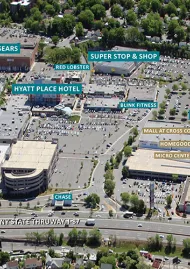The Future of Malls
Was Decline Inevitable?

One reason for the decline of American shopping malls, once the epicenters of suburban retail, was the rapid and excessive construction of malls in the 20th century. By the 2010s, the United States had nearly twice the retail square footage per capita compared to Europe, creating "unsustainable oceans of store space." Department stores, traditionally the anchors of malls, faced drastic declines as consumers sought more differentiated and specialized retail experiences or shopped online.
Not all malls closed, some managed to utilize their favorable locations. What geographic features allowed these malls to thrive? To adapt, other malls are repurposing vacant spaces for new uses. Some have been converted into office spaces, educational facilities, medical centers, and even residential units, aiming to create mixed-use environments that foster community engagement and attract diverse visitor demographics. What were the best alternatives for these vast spaces?